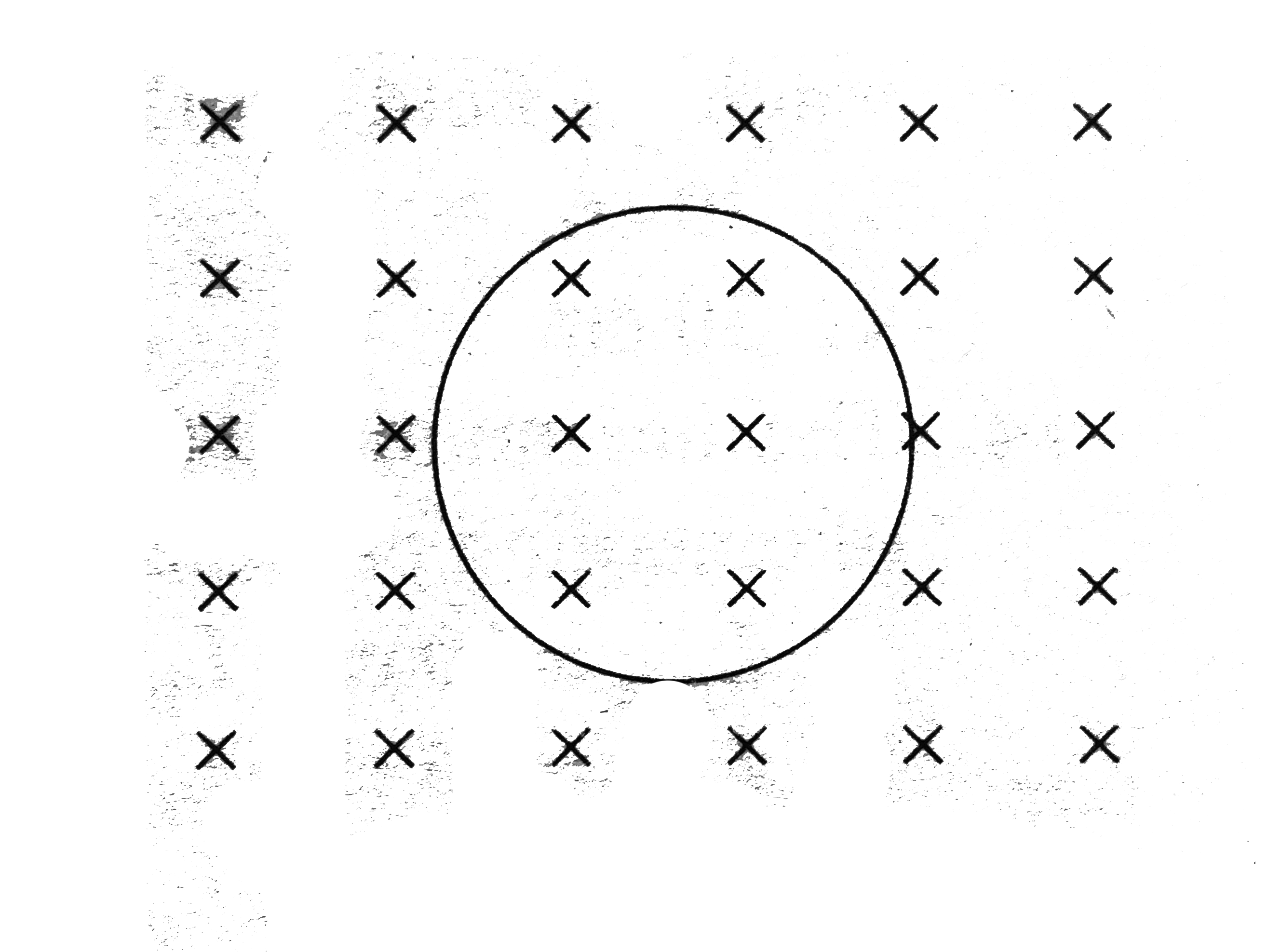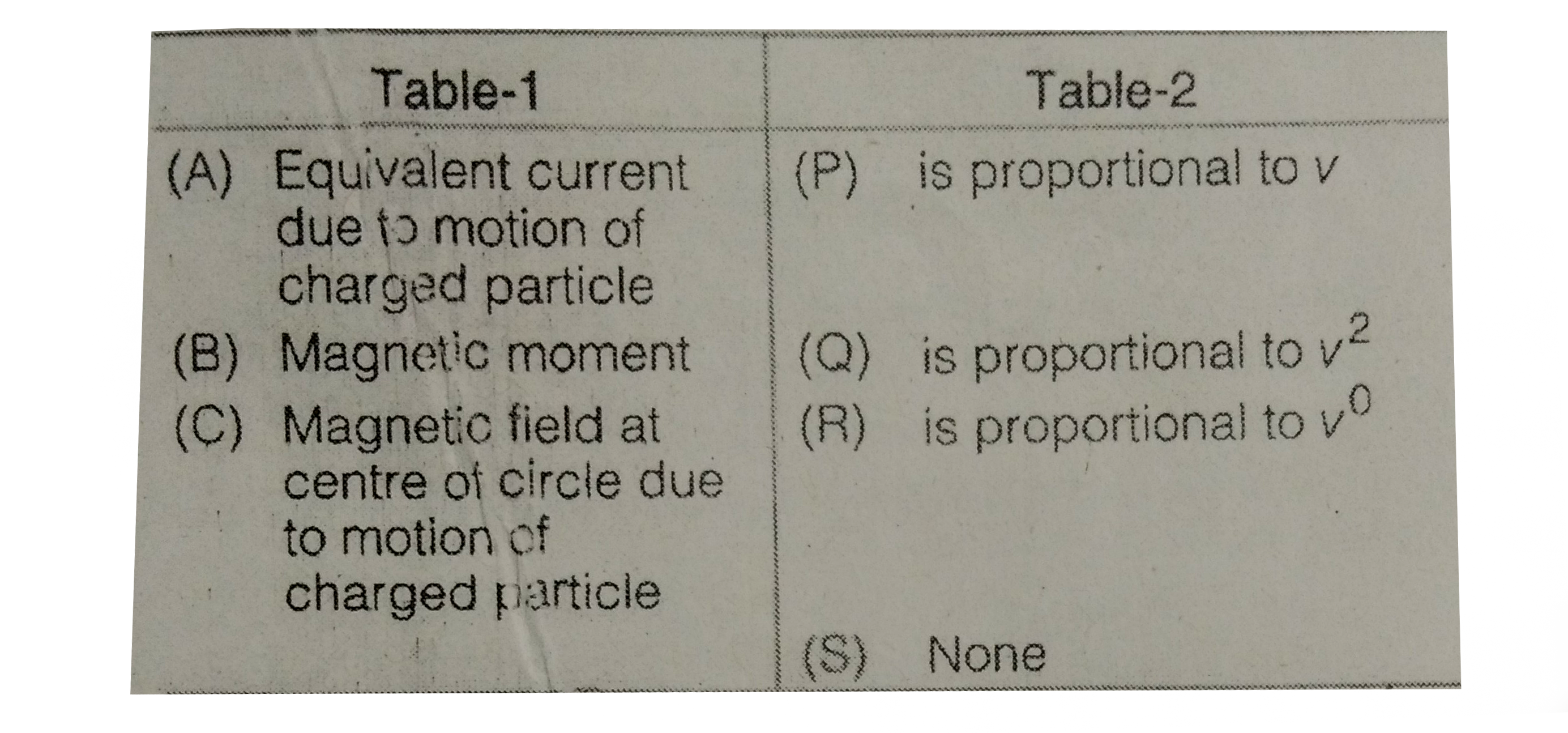A charged particle moves in a circular path in a uniform magnetic field. If its speed is reduced, then its tiem period will
increase
decrease
remain same
none of these
The correct Answer is:C
To solve the problem, we need to analyze the motion of a charged particle in a magnetic field and derive the relationship between its speed, radius of the circular path, and the time period of the motion.
1. Understanding the Forces:
A charged particle moving in a circular path in a magnetic field experiences a magnetic force that acts as the centripetal force required for circular motion. The magnetic force F on a charged particle is given by:
F=qvB
where q is the charge of the particle, v is its speed, and B is the magnetic field strength.
2. Centripetal Force:
The centripetal force required to keep the particle moving in a circular path is given by:
F=mv2r
where m is the mass of the particle and r is the radius of the circular path.
3. Equating Forces:
For circular motion, the magnetic force must equal the centripetal force:
qvB=mv2r
4. Solving for Radius:
Rearranging the equation gives us:
r=mvqB
This equation shows that the radius r of the circular path depends on the speed v of the particle.
5. Calculating the Time Period:
The time period T of the motion is the time taken to complete one full circle. The distance traveled in one complete revolution is the circumference of the circle, which is 2πr. Therefore, the time period T can be expressed as:
T=DistanceSpeed=2πrv
6. Substituting for Radius:
Substituting the expression for r into the equation for T:
T=2π(mvqB)v
7. Simplifying the Time Period:
The v in the numerator and denominator cancels out:
T=2πmqB
This shows that the time period T does not depend on the speed v of the particle.
8. Conclusion:
Since the time period T is independent of the speed v, if the speed of the charged particle is reduced, the time period will remain the same.
Final Answer:
The time period will remain the same.
A charged particle moving in a circular path in a magnetic field experiences a magnetic force that acts as the centripetal force required for circular motion. The magnetic force F on a charged particle is given by:
F=qvB
where q is the charge of the particle, v is its speed, and B is the magnetic field strength.
The centripetal force required to keep the particle moving in a circular path is given by:
F=mv2r
where m is the mass of the particle and r is the radius of the circular path.
For circular motion, the magnetic force must equal the centripetal force:
qvB=mv2r
Rearranging the equation gives us:
r=mvqB
This equation shows that the radius r of the circular path depends on the speed v of the particle.
The time period T of the motion is the time taken to complete one full circle. The distance traveled in one complete revolution is the circumference of the circle, which is 2πr. Therefore, the time period T can be expressed as:
T=DistanceSpeed=2πrv
Substituting the expression for r into the equation for T:
T=2π(mvqB)v
The v in the numerator and denominator cancels out:
T=2πmqB
This shows that the time period T does not depend on the speed v of the particle.
Since the time period T is independent of the speed v, if the speed of the charged particle is reduced, the time period will remain the same.
The time period will remain the same.
Topper's Solved these Questions
- MAGNETICSBOOK - DC PANDEY ENGLISHCHAPTER - MAGNETICSEXERCISE - SCQ_TYPE
5 Videos
- MAGNETICSBOOK - DC PANDEY ENGLISHCHAPTER - MAGNETICSEXERCISE - MCQ_TYPE
1 Videos
- MAGNETICSBOOK - DC PANDEY ENGLISHCHAPTER - MAGNETICSEXERCISE - SUBJECTIVE_TYPE
1 Videos
- MAGNETIC FIELD AND FORCESBOOK - DC PANDEY ENGLISHCHAPTER - MAGNETIC FIELD AND FORCESEXERCISE - Medical entrance s gallery
59 Videos
- MAGNETISM AND MATTERBOOK - DC PANDEY ENGLISHCHAPTER - MAGNETISM AND MATTEREXERCISE - Medical gallery
1 Videos
Similar Questions
Knowledge Check
A charged particle is moving on circular path with velocityv in a uniform magnetic field B, if the velocity of the charged particle is doubled and strength of magnetic field is halved, then radius becomes
A8 timesB4 timesC2 timesD16 times
If a charged particle enters perpendicular in the uniform magnetic field then
View SolutionWhen a charged particle moves in an elecltric or a magnetic field, its speed is v and acceleration is a
View SolutionAssertion A charged particle is rotating in a circular path in uniform magnetic field. Then, plane of circle is perpendicular to the magnetic field.
Reason Circular motion is a two-dimensional motion.
View SolutionAssertion: A charged particle is moving in a circle with constant speed in uniform magnetic field. If we increase the speed of particle to twice, its acceleration will become four times.
Reason: In circular path of radius R with constant speed v, acceleration is given by v2R
View SolutionCan a charged particle be accelerated by a magnetic field. Can its speed be increased?
View SolutionA charged particle revolves in circular path in uniform magnetic field after accelerating by a potential difference of V volts. Choose the incorrect option if V is doubled.
View SolutionStatement 1: A charged particle is moving in a circular path under the action of a uniform magnetic field as shown in Fig. During motion kinetic energy of charged particle is costant.
Statement 2: During the motion, magnetic force acting on the particle is perpendicular to instantaneous velocity.

View Solution

